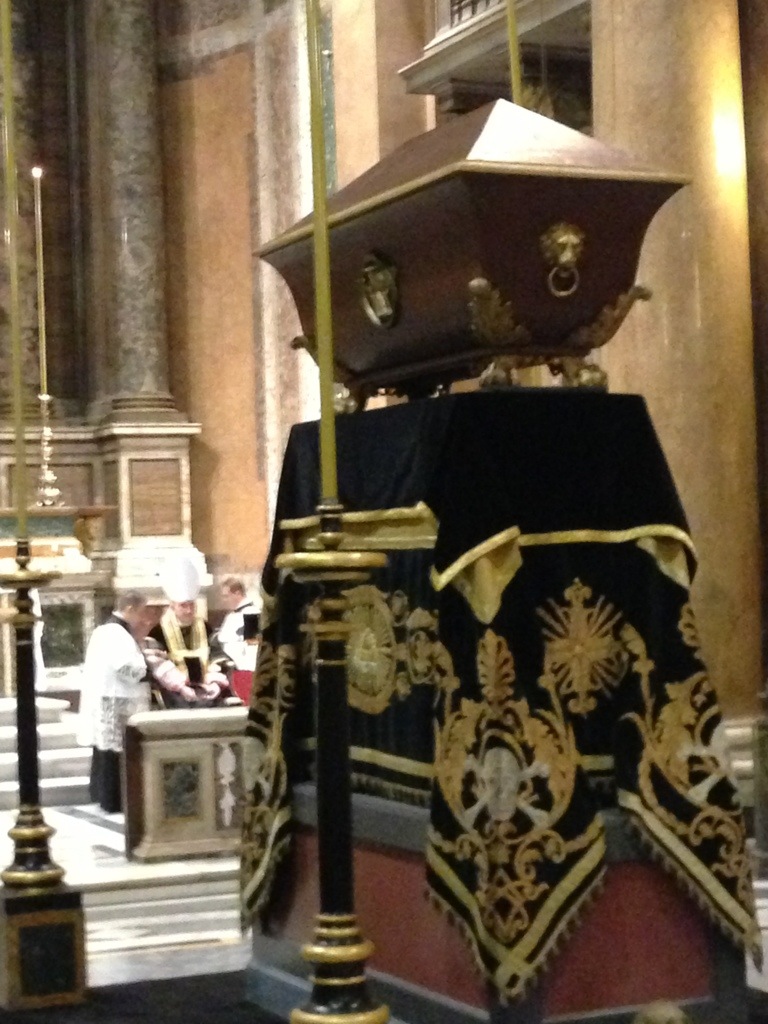 First of all, don’t forget to get those indulgences! HERE
First of all, don’t forget to get those indulgences! HERE
Today is the Commemoration of All Souls, meaning, our liturgical remembrance of those souls now in the purifying state of Purgatory.
Prayer for the dead is a work of mercy. You can help those who have gone into death by your prayers and good works to which the Church has attached indulgences, applying to them the merits of Christ and the saints.
I received a note from a reader…
QUAERITUR:
I have attended many Traditional Masses, but – until next week – an All Souls Mass with a Catafalque.
What can I expect regarding the Catafalque itself and what (if
anything) is expected of me regarding Absolution at the Catafalque.As Traditional Masses expand and more Catholics come in contact with our reemerging liturgical treasures, perhaps my question may be of value to other readers.
Absolution of the Catafalque. What’s with that?
Traditionally we pray over the bodies of the dead before they are consigned to their earthly resting place to await the Resurrection at the end of things. These prayers ask God’s mercy on the deceased and petition a relief of temporal punishment due to sin so as to speed their souls to heaven.
When, in the traditional, form of the Roman Rite, we have a Requiem Mass for the Dead, we can also have an “absolution of the catafalque”. A catafalque is a framework, often decorated, which supports a coffin during a funeral or while lying in state. At the end of a Requiem Mass when the deceased’s body is present, the coffin is on the catafalque. However, we celebrate Requiem Masses in the traditional form for the dead even when the body is not present. As a matter of fact, this was very common in most places, especially when there were several priests at a parish. It was not uncommon for a parish to have a Requiem every day. In these cases, there could be the absolution at the end, as if there were a body present. The catafalque would be set up and the absolution would be given, as if there were a body. Sometimes, to substitute for the catafalque a pall, a large cloth to drape the coffin, would be placed on the ground, to symbolize the catafalque and body.
After the Mass, the celebrant puts on a black cope and goes to the catafalque. Chants and prayers are sung. He goes about the catafalque with holy water and incense. More chants are sung and that’s that.
Here is a photo of the Extraordinary Ordinary of Madison while he sprinkled holy water on the catafalque during the annual Requiem we have for the deceased priests of the diocese.

So, in short, the catafalque symbolizes the moral presence of the bodies of those for whom we are praying for relief from temporal punishment due to sin and swift entrance to heaven. In the traditional rite, we treat it much as we would the body of the deceased, with the chants, prayers and absolution as if before burial.
Here is a video from a some time ago of the absolution of a catafalque after a Mass at Sanctissima Trinità dei Pellegrini in Rome.


































What are the origins, meaning, and intention of this traditional practice?
[The text in the post, above, could provide some of what you are asking about.]
Can it be classified as a sacramental then?
My sister and brother-in-law just called from Wisconsin to say they attended the Requiem Mass tonight in Madison with Bishop Morlino as celebrant, and received Our Lord from the hands of Fr. Z. I, in the Diocese of Honolulu, can only dream of attending such a resplendent liturgy. But grateful are we for such graces for the Holy Souls through this Mass, and Masses across the globe, on this day of reflection.